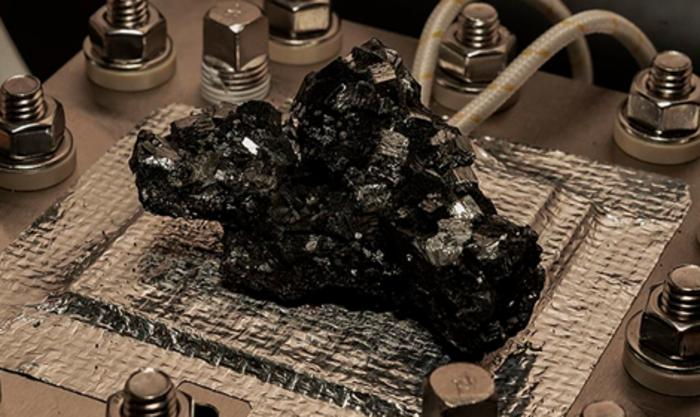Reviewed by Lexie CornerApr 29 2024
In a study described in Nature Catalysis, researchers at the RIKEN Center for Sustainable Resource Science have improved their method for producing clean hydrogen fuel from water. They designed a new catalyst that lasts thousands of times longer, paving the way for a more sustainable hydrogen economy.

Proton exchange membrane (PEM) water electrolyzer using manganese oxide. Image Credit: RIKEN
This work was led by Ryuhei Nakamura at the RIKEN Center for Sustainable Resource Science (CSRS) in Japan. The study outlines how researchers manipulated the catalyst's 3D structure, resulting in enhanced stability and a nearly 4,000 % increase in the catalyst's lifespan.
Proton exchange membrane water electrolysis represents an environmentally friendly electrochemical method for dividing water into oxygen and hydrogen. This method produces hydrogen that can be stored and used later. For instance, the stored hydrogen can power an electric vehicle when paired with a proton exchange membrane (PEM) fuel cell.
PEM electrolysis still has drawbacks, prohibiting broad industrial applications like power plants. Specifically, the required chemical reactions occur in highly acidic environments, and extremely rare earth metals, like iridium, are the best catalysts for these reactions.
Scaling up PEM electrolysis to the terawatt scale would require 40 years’ worth of iridium, which is certainly impractical and highly unsustainable.
Ryuhei Nakamura, Study Head, RIKEN Center for Sustainable Resource Science
Almost two years ago, Nakamura and colleagues created a ground-breaking method that facilitated water electrolysis without the use of rare earth metals. They developed a technique that only used common, sustainable earth metals by introducing manganese into a cobalt oxide lattice. Though the process was successful, it was still not as stable as a PEM electrolyzer. They have now improved upon their earlier finding and created a more durable catalyst that is abundant in the earth.
The novel catalyst is a type of manganese oxide (MnO2). The main discovery was that by changing the catalyst's lattice structure, reaction stability could be increased by more than 40 times. The three-dimensional lattice structure of manganese oxide has two different forms of oxygen: planar and pyramidal. The researchers found that increasing the amount of planar oxygen in the lattice greatly increased catalytic stability and that the planar version forms stronger bonds with manganese.
Four distinct manganese oxides with varying percentages of planar oxygen were tested. With the highest attainable percentage, 94 %, this version sustains the critical oxygen evolution reaction in an acidic environment for one month at 1000 mA/cm2. The total transferred charge was 100 times greater than observed in other studies.
During testing in a PEM electrolyzer, water electrolysis could be sustained for approximately six weeks at 200 mA/cm2. During this period, the total volume of water electrolyzed, and consequently the quantity of hydrogen generated, surpassed previous achievements with other non-rare metal catalysts by a factor of 10.
Surprisingly, the improved stability did not come at a cost in activity, which is usually the case. A PEM water electrolyzer that generates hydrogen with an earth-abundant catalyst at a rate of 200 mA/cm2 is highly efficient.
Shuang Kong, Study Co-First Author, RIKEN Center for Sustainable Resource Science
Although there is more to accomplish, industrial applications typically demand a stable current density of 1000 mA/cm2 over several years rather than just a month. The researchers remain optimistic that tangible real-world applications will eventually become feasible, contributing to carbon neutrality.
We will continue to modify catalyst structure to increase current density and catalyst lifetime. In the long term, our efforts should help achieve the ultimate objective for all stakeholders—to conduct PEM water electrolysis without the use of iridium.
Ryuhei Nakamura, Study Head, RIKEN Center for Sustainable Resource Science
The researchers’ immediate goal is to spur public interest in sustainable hydrogen production as a workable way to mitigate the effects of climate change caused by fossil fuels.
Journal Reference:
Kong, S., et al. (2024) Acid-stable manganese oxides for proton exchange membrane water electrolysis. Nature Catalysis. doi.org/10.1038/s41929-023-01091-3